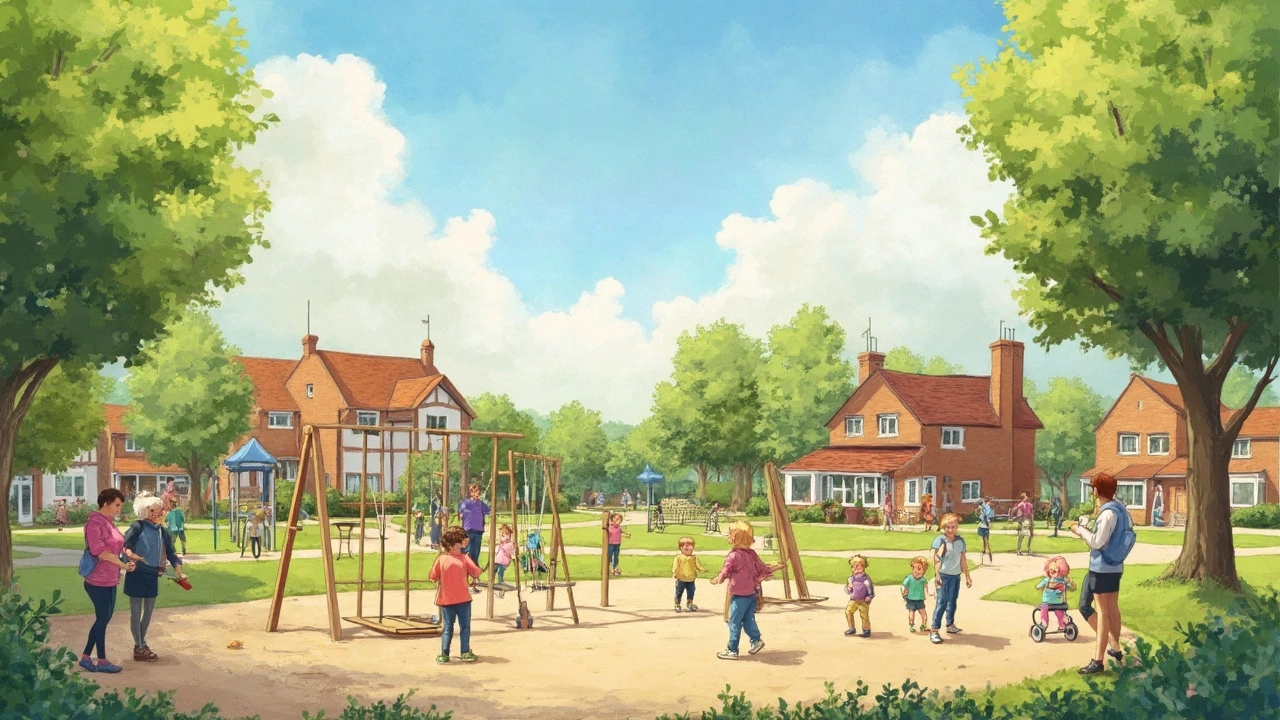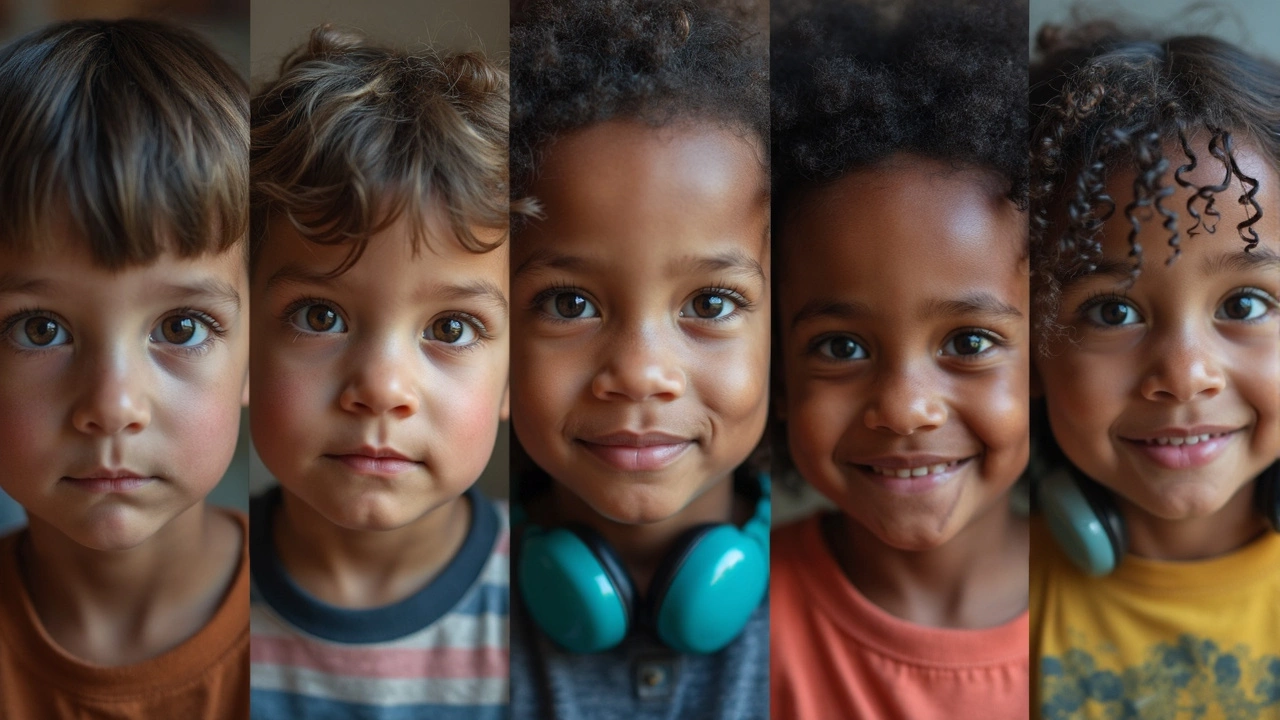Talking about special needs kids can feel overwhelming, but understanding their unique challenges is a step in the right direction. So, ever thought about how diverse these needs are? Let's dive into the four major categories: physical, developmental, behavioral/emotional, and sensory impairments.
Physical disabilities are often what people first think of when it comes to special needs—like someone using a wheelchair or a walker. But there's so much more to it. Things like cerebral palsy, muscular dystrophy, or even arthritis in young ones fall under this category. Being aware helps us adapt environments for their comfort and independence.
- Physical Disabilities: What They Entail
- Developmental Disorders: Navigating the Path
- Understanding Behavioral and Emotional Needs
- Sensory Impairments: Unique Challenges
- Supporting Special Needs in Everyday Life
Physical Disabilities: What They Entail
Diving into the world of physical disabilities, it’s kind of eye-opening to realize how broad this category can be. It's not just about mobility issues you might first picture, like needing a wheelchair. It covers conditions that affect how the body functions, like cerebral palsy, muscular dystrophy, or even limb differences. These aren't rare conditions either. According to the CDC, about 1 in 33 babies is born with some type of physical disability.
Understanding these conditions means recognizing the extra steps needed to tailor environments and teaching methods for these kids. Take cerebral palsy, for instance, which affects muscle tone and movement. Schools might need ramps, accessible transportation, or special educational tools to assist learning.
"Inclusivity isn't just about physical access; it's about everyone having equal opportunities to participate and benefit," says Susan I. Menzies, a renowned occupational therapist.
To paint a clearer picture, here's a snapshot of some key physical disabilities:
- Cerebral Palsy: This impacts a child's ability to move and maintain balance and posture. It can lead to stiff or floppy limbs and difficulty with fine motor skills.
- Spina Bifida: This birth defect involves incomplete development of the spinal cord or its coverings, which can result in mobility issues.
- Muscular Dystrophy: A group of inherited diseases that cause muscle weakness and loss of muscle mass.
- Arthritis: Although it sounds like an adult problem, children can have arthritis too, causing joint pain and swelling.
By acknowledging these special needs children face, we can create spaces and opportunities that genuinely support all children. The goal is not only to accommodate but also to celebrate the diverse ways each child can succeed.
Developmental Disorders: Navigating the Path
Ever noticed how some kids seem to hit those growth milestones slower or differently than others? That’s where developmental disorders come into play. These are conditions like autism spectrum disorder (ASD), Down syndrome, and dyslexia, which can impact a child’s intellectual, emotional, and physical development.
Understanding these disorders isn’t about putting a label on a child; it’s about figuring out the best ways to support them. For example, children on the autism spectrum can have a range of abilities and challenges. Some might struggle with social interactions or verbal communication, but they might also excel in art, music, or maths. The key is to focus on their strengths and nurture them with the right support.
A handy tip is early intervention programs. These can be game-changers, helping kids develop crucial skills before they start school. The sooner they get the help they need, the better their chances of success.
There’s also a wealth of resources for parents and educators. Schools often have special education teams that craft individualized education plans (IEPs) tailored to fit each child’s unique needs. These plans outline specific goals and the support required to reach them.
For a bit of perspective, let’s look at some numbers:
| Type of Developmental Disorder | % Prevalence in Children |
|---|---|
| Autism Spectrum Disorder (ASD) | 1 in 54 children in the U.S. |
| Down Syndrome | About 6,000 babies born annually in the U.S. |
| Dyslexia | Up to 10% of the population affected |
These stats remind us of how important it is to understand and address developmental disorders. It’s about paving a smoother path for children by embracing their unique journeys.

Understanding Behavioral and Emotional Needs
When we think about special needs, it's easy to overlook the importance of behavioral and emotional challenges. Yet, these can be as impactful as physical disabilities or developmental disorders. Looks can be deceiving, right? A child who seems a bit more energetic than usual might actually have ADHD, or a kid who's often sad might be dealing with depression.
Behavioral challenges might include difficulties with controlling impulses, avoiding distractions, or connecting with peers. It's not about being naughty or defiant; there's usually a deeper cause. For instance, conditions like ADHD and autism often affect how a kid interacts with others, what grabs their attention, and how they express their feelings.
Emotional needs are equally crucial. Ever felt misunderstood when you're upset? That's how kids with emotional difficulties feel every day. Conditions such as anxiety or depression can manifest in young ones through irritability and withdrawal, often misinterpreted as misbehavior.
So what can we do to lend a hand? Here are some approaches:
- Encourage open communication. Let kids know it's okay to talk about their feelings. A safe space can make a world of difference.
- Routine is key. Keeping a regular schedule helps kids with behavioral and emotional challenges feel secure and understand what's expected of them.
- Positive reinforcement. Catch them being good, and reward those moments. A little praise goes a long way in boosting confidence.
- Teach coping strategies. Whether it's deep breathing for anxiety or time-outs for clamoring emotions, tools like these are lifesavers.
Addressing these needs early on is crucial. Not only does it improve school life for these special needs children, but it also sets the foundation for a healthier, more balanced future. A little understanding and patience can go a long way in making a real difference.
Sensory Impairments: Unique Challenges
Sensory impairments might not be as visible as other types of special needs, but that doesn't mean they're any less challenging. Imagine trying to navigate the world when your senses don't quite give you the full picture. Kids with these impairments face situations that demand a lot from them—and from those around them.
Let's talk about hearing and vision impairments, the two biggies in this category. Around 5% of the global population deals with some kind of hearing loss. For kids, this might mean trouble learning to speak or communicate effectively. Luckily, with tools like hearing aids and sign language, many kids find their way to fluency and understanding.
Vision impairment can range from mild issues with glasses to total blindness. It's like having a dimmer switch on life, and education needs to adapt. Braille, audio books, and tech gadgets like screen readers are everyday heroes in these classrooms.
But it's not just about seeing and hearing. Ever heard of sensory processing disorder? It doesn't fit neatly into just one sense but can make ordinary environments feel overwhelming or under-stimulating. For these kids, a noisy classroom might feel like being in a concert front row, or a gentle touch might be like a tickle with a feather that turns into an unbearable itch. Understanding this makes a world of difference in how we set up their learning spaces.
Creating a supportive environment means being flexible and creative. Here's a quick list of considerations:
- Use clear and simple instructions. Consider visual aids for those who struggle with audio.
- Offer quiet, calm spaces for those easily overwhelmed.
- Employ technology, like tablets and audio prompts, to support learning.
- Practice patience and empathy—sometimes a little understanding goes a long way.
Ensuring that kids with sensory impairments are given equal opportunities to learn and succeed takes effort. But the pay-off? Real connections and the joy of seeing kids thrive in their own unique ways.

Supporting Special Needs in Everyday Life
Wondering how you can make a difference in the daily lives of children with special needs? It doesn’t require superhero powers, just a bit of understanding and creativity.
First thing to remember is that structure and routine can be a game-changer for kids with developmental disorders or behavioral challenges. Think of routines as a comfortable blanket—they bring predictability and safety. Creating a simple visual schedule at home can help.
Working on communication? Kids with sensory impairments like hearing or speech issues benefit a lot from alternative forms of expression. Try sign language or picture boards. They can open up surprising opportunities for connection.
On the lookout for tips on promoting independence? Allow children to make choices. Even small ones like picking a snack or a toy to play with helps build decision-making skills. Use tools like adaptive utensils or velcro shoes to make day-to-day tasks more achievable.
Safety is another biggie. If a child has a physical disability, consider ramps instead of stairs and grab bars where needed. These adjustments can make moving around their environment easier. Even rearranging furniture for better accessibility makes a big difference.
Let's talk about creating inclusive social experiences too. Educating peers about diversity and empathy puts everyone on the same page. Role-playing games that include everyone teach skills while being fun.
One more nugget: always keep communication open with caregivers, teachers, and therapists. They can offer invaluable insights tailored to specific needs.
Here's a quick checklist that can help parents and caregivers:
- Establish a consistent routine.
- Use visual aids and communication tools.
- Encourage choice-making to boost confidence.
- Ensure the home is safe and accessible.
- Foster inclusive and empathetic play environments.
These everyday efforts, small as they may seem, add up to create a supportive and thriving world for children with special needs.
